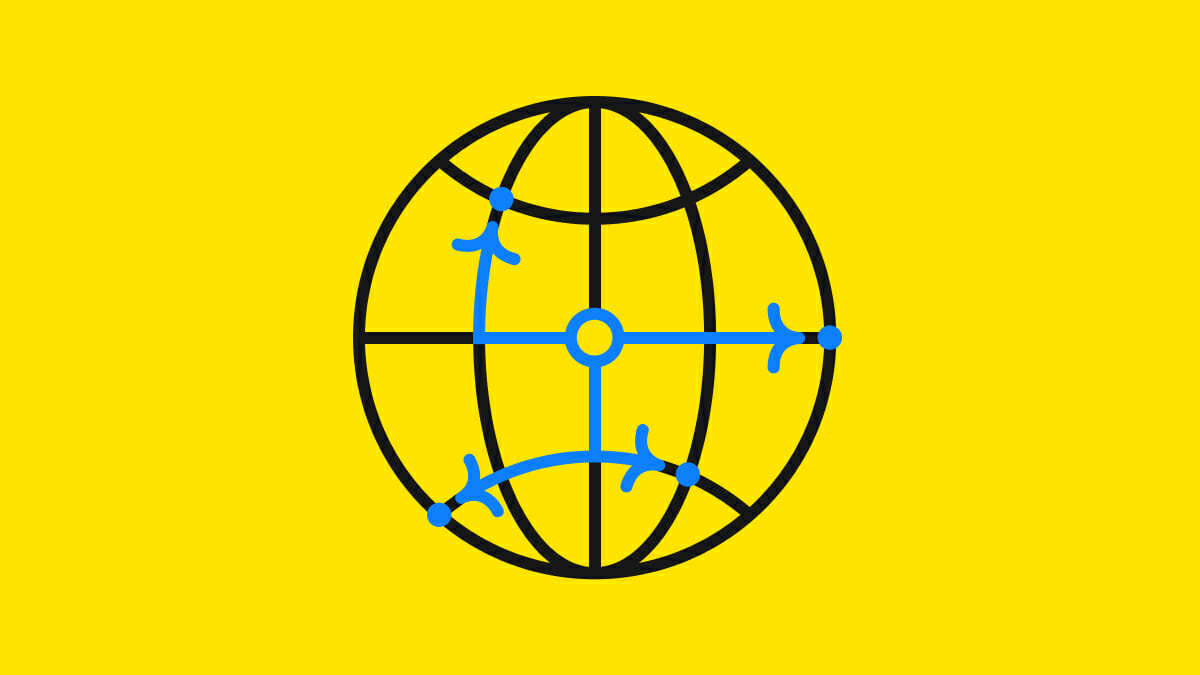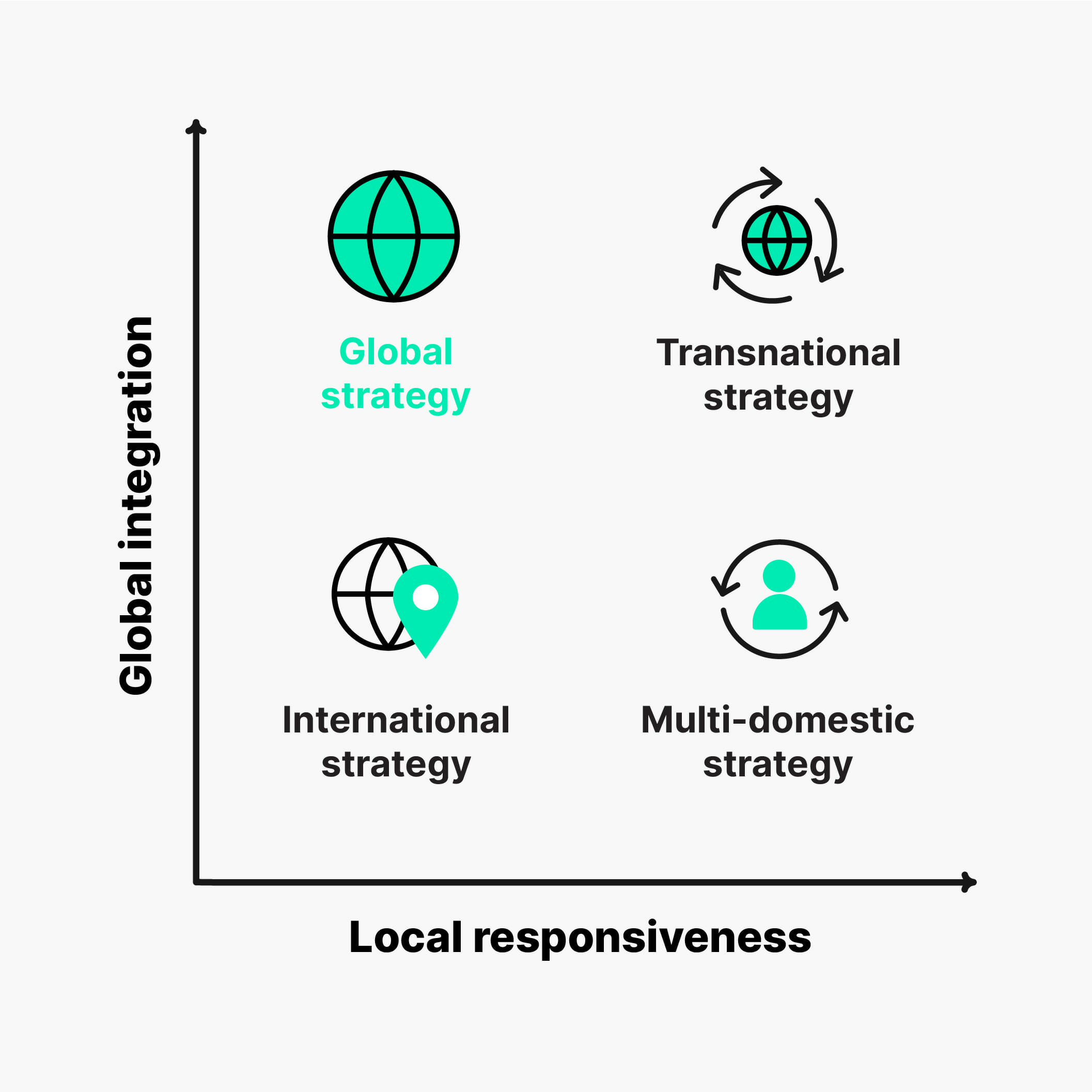Global business
Innovation in Uniformity: Embracing the Global Strategy Advantage

Global strategy is a type of global expansion strategy used by companies to gain cost leadership through low differentiation, efficiency, and centralized operations.
To help you get a better understanding of how global strategy works and how it helps organizations expand overseas, this guide introduces global strategy and offers a comparison with other global expansion strategy types. You’ll also find successful global strategy examples you can use for inspiration.
What is a global strategy?
Global strategy is a type of global expansion strategy that favors efficiency and cost competition, giving up local responsiveness and appealing to customers almost entirely through low costs.
Product customization for local markets is very limited and operations are likely centralized to a few locations or a single global location in order to take advantage of supply chain efficiencies.
If possible, companies will use the same products and possibly even the same marketing and distribution strategies, streamlining operations wherever possible.
When price is the most important consideration and companies have little to gain from customizing to a local market, global strategies are often the best choice for the organization.
Manufacturing components, equipment, and business-to-business (B2B) products are commonly made and sold in international markets through global strategy.
As companies transition into new markets and begin doing business overseas, global strategy is a popular way to expand and begin exporting.
How global strategy differs from other global expansion strategies
Aside from global strategy, there are 3 other types of global expansion strategies that take distinct approaches to cost competition and local responsiveness. Transnational strategy, multi-domestic strategy, and international strategy are other ways of expanding your business globally, and each one has unique advantages for your business.

Transnational strategy
A transnational strategy balances local responsiveness and cost competitiveness to reach customers with a product or service that is adapted to their preferences and low-cost when compared to competitors’ options. Companies following a transnational strategy offer an appealing brand that fits overseas markets and is produced with highly efficient operations.
Multi-domestic strategy
Multi-domestic strategy, as the opposite of global strategy, focuses heavily on local customization and places less emphasis on efficiency and cost. Because multi-domestic companies prioritize localization, they are typically able to compete effectively with brands and in industries where cultural differences are particularly important. Global companies may create unique brands for different markets and develop separate operations and manufacturing.
International strategy
Companies applying international strategy export their products and services with few changes and little-to-no cost optimization. Many companies following this strategy have strong global brands and benefit more from exporting identical products. Even if their pricing is higher than similar local products, customers are often willing to pay a premium for the brand. Luxury goods companies often use international strategy.
What are the benefits of a global strategy?
There are unique benefits to global strategy since this approach allows companies to optimize their pricing competitiveness by deeply reducing costs and maximizing efficiency through economies of scale.
More efficient production
For industries that are relatively similar across cultures, a global strategy is likely the most competitive option. The same designs and product lines you offer in your domestic market could be exported to other countries, increasing efficiency.
Lower costs
With improved efficiency, your products can be produced and offered at a lower cost. You have lower startup costs in your new market since you don’t necessarily need a local factory and separate local operations. With specialized branding minimal, you can save what would otherwise be spent on developing branding for your new market.
Export your reputation
If your brand is well established in a luxury market, your company can benefit from this reputation overseas. Imported products are often popular because of historical associations with quality—Swiss watches, for example, or French cheese. Some brands are now globally known and loved with little local competition as a result of significant investment in branding and public relations or a reputation for quality.
Top 5 global strategy examples
Now that you’re aware of the meaning of global strategy, let’s take a closer look at some of the most successful companies employing this type of global expansion strategy.
Intel
As a global company specializing in semiconductors, Intel offers a crucial product that remains largely the same around the world and has very little differentiation for different markets. As a critical component of computers, smartphones, servers, and internet-of-things (IoT) smart devices, semiconductor pricing isn’t experienced directly by consumers—it’s a product largely purchased by businesses for integration into their own products—so semiconductors are an ideal example of global strategy in action.
Pfizer
Many pharmaceutical companies, such as the global pharmaceutical giant Pfizer, serve as good examples of global strategy. Pfizer produces a vaccine for viruses like COVID-19, which is highly standardized to ensure high quality, safety, and low cost. This vaccine is just one of Pfizer’s many pharmaceutical product lines, all of which prioritize consistency.
IKEA
The Swedish home goods store sells the same designs and products in markets outside Sweden, with basic customization for local markets and a high degree of standardization. Every market has similar IKEA stores with a similar layout and design, too. This consistency helps keep the costs of home furnishings low enough to entice customers to buy.
Microsoft
Microsoft, headquartered in Redmond, WA, develops computer software for consumers and businesses that remains largely consistent across every market. Although Microsoft does have operations overseas, much of its software is written and the organization is run from its US-based headquarters. The software can be translated into other languages, and minor customizations are offered for users in other markets. However, the majority of what sets Microsoft software apart is produced in the US.
Disney
Disney operates in more than 80 countries but has brand recognition globally for the same cast of popular characters, a broad range of entertainment brands, and well-known television and film franchises. Within each market, Disney does not have to extensively customize products and branding for local audiences—Disney products are popular for their association with the overarching Disney brand.
Expand internationally with a global strategy
Global expansion strategies can help your business reach new markets and increase profitability. With a global strategy, your company can leverage brand strength, save resources, and compete more effectively on pricing.





